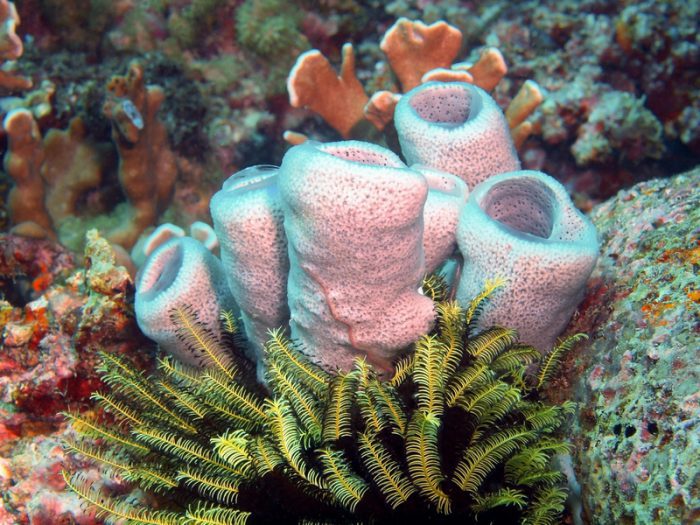Ahhh-CHOO!
When we sneeze, it certainly causes quite a ruckus! There's the big noise. Our head jerks forward. Our eyes squeeze shut.
But the main reason for this big event isn't to stop traffic or jump scare everyone in the room.
It's to get yucky stuff out of our head.
A single sneeze is estimated to expel around 100,000 germs and shoots them out at a speed that's faster than a car on the highway!
And if you're feeling a little under the weather, chances are your sneeze will also release a bunch of mucus, too. This is the gooey guck in your nasal passages that acts as a sticky trap for foreign things like the dust and germs that we breath in accidentally.
It's a simple equation to good health. Mucus catches the bad stuff. Then sneezes shoot them all out.
And it's an equation used by all sorts of other animals. Including ... sea sponges?
According to a new study, deep-sea sponges have evolved to sneeze out mucus to stay healthy. Except, instead of it coming out of a pair of nostrils, it kind of shoots out of holes all over their bodies.
Gross!
What is a sea sponge?
Sea sponges may be primitive in their biology, but they can get quite large! (Getty Embed)
Sea sponges are some of the oldest animals living today. They first evolved around 580 million years ago and have changed very little since then.
They can't move and are rooted to their spot on the seafloor. They don't have a nervous system, nor do they have digestive (food breakdown) or circulatory (blood flow) systems. They don't even have a brain!
Instead, they are basically just a hunk of body tissue that is full of pores, or holes. Water flows into these pores, and the sponge's body extracts everything that it needs to survive—nutrients and oxygen. The water also helps to carry out waste.
In other words, these animals have very little in common with us, never mind many of the other creatures in the sea. But they do sneeze!
Bless goo!
A dried sea sponge is very similar to the artificial ones that we use for cleaning. Here is a natural sea sponge that's meant to be used when painting. (Getty Embed)
Thanks to a study by researchers at the University of Amsterdam, sponges have been found to use a type of sneezing to get rid of old mucus.
As one of the lead scientists, Jasper de Geoji, said in a press release, "sponges don't sneeze like humans do. But both sponge and human sneezes exist as a waste disposal mechanism."
This makes sense. Without a respiratory system like what we have (lungs, windpipe, nostrils), the sponges are incapable of a similar sneeze. In addition, their sneezes take around a half hour to complete—way longer than the lightning fast sneak attacks that human sneezes are.
But using contractions (like a squeeze) through their bodies, they regularly do their own version of a 'sneeze' to push out mucus to keep their insides in tip-top shape.
And even weirder? Some fish then come along and gobble this sponge snot up! We always though that you weren't supposed to pick your nose and eat it, but maybe it's okay if it's actually another animal's boogers?
Actually, forget we said that!
Watch the time-lapse (sped up) video below to see a bunch of different sponges in action.
 An example of a sea sponge, an animal that comes in all sorts of shapes, colours, and sizes. (ID 36360799 © Alexander Ogurtsov | Dreamstime.com)
An example of a sea sponge, an animal that comes in all sorts of shapes, colours, and sizes. (ID 36360799 © Alexander Ogurtsov | Dreamstime.com)









